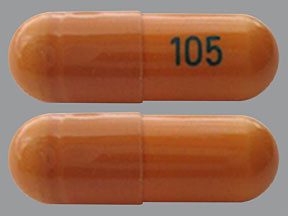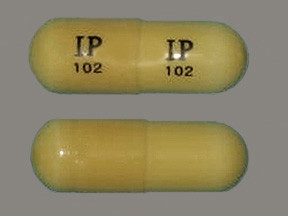GABAPENTIN - ORAL
PHONETIC PRONUNCIATION: (gab-uh-PEN-tin)
COMMON BRAND NAME(S): Neurontin
GENERIC NAME(S): gabapentin
Uses
USES: Gabapentin is used with other medications to prevent and control seizures. It is also used to relieve nerve pain following shingles (a painful rash due to herpes zoster infection) in adults. Gabapentin is known as an anticonvulsant or antiepileptic drug.
How to use GABAPENTIN - ORAL
HOW TO USE: Read the Medication Guide and, if available, the Patient Information Leaflet provided by your pharmacist before you start taking gabapentin and each time you get a refill. If you have any questions, ask your doctor or pharmacist. Take this medication by mouth with or without food as directed by your doctor. Dosage is based on your medical condition and response to treatment. For children, the dosage is also based on weight. If you are taking the tablets and your doctor directs you to split the tablet in half, take the other half-tablet at your next scheduled dose. Discard half tablets if not used within several days of splitting them. If you are taking the capsules, swallow them whole with plenty of water. It is very important to follow your doctor's dosing instructions exactly. During the first few days of treatment, your doctor may gradually increase your dose so your body can adjust to the medication. To minimize side effects, take the very first dose at bedtime. Take this medication regularly to get the most benefit from it. This drug works best when the amount of medicine in your body is kept at a constant level. Therefore, take gabapentin at evenly spaced intervals at the same time(s) each day. If you are taking this medication 3 times a day to control seizures, do not let more than 12 hours pass between doses because your seizures may increase. Do not take this medication more often or increase your dose without consulting your doctor. Your condition will not improve any faster and the risk of serious side effects may increase. Do not stop taking this medication without consulting your doctor. Some conditions may become worse when the drug is suddenly stopped. Your dose may need to be gradually decreased. Antacids containing aluminum or magnesium may interfere with the absorption of this medication. Therefore, if you are also taking an antacid, it is best to take gabapentin at least 2 hours after taking the antacid. Different forms of gabapentin (such as immediate-release, sustained-release, enacarbil sustained-release) are absorbed in the body differently. Do not switch from one form to the other without consulting your doctor. Tell your doctor if your condition does not improve or if it worsens.
Side Effects
Precautions
Interactions
Overdose
Images

- color
- white
- shape
- oblong
- imprint
- logo and 509, logo and 509

- color
- white
- shape
- oblong
- imprint
- logo and 509, logo and 509

- color
- yellow
- shape
- oblong
- imprint
- logo and 510, logo and 510

- color
- yellow
- shape
- oblong
- imprint
- logo and 510, logo and 510

- color
- orange
- shape
- oblong
- imprint
- logo and 511, logo and 511

- color
- orange
- shape
- oblong
- imprint
- logo and 511, logo and 511
Reviews
Faq for GABAPENTIN - ORAL
Gabapentin is a medication that belongs to a class of drugs called anticonvulsants. It is commonly used to treat seizures and various types of nerve pain.
Gabapentin works by affecting the chemicals and nerves in the body that are involved in seizures and pain sensations. It is believed to reduce the abnormal electrical activity in the brain that causes seizures and alter the way pain signals are transmitted in the body.
Gabapentin is used to treat various conditions, including seizures (epilepsy), postherpetic neuralgia (nerve pain following shingles), neuropathic pain (nerve pain due to damaged nerves), restless leg syndrome, and fibromyalgia.
Common side effects of gabapentin may include dizziness, drowsiness, fatigue, blurred vision, weight gain, coordination problems, and dry mouth. It is important to consult with a healthcare professional to discuss any potential side effects and how to manage them.
Gabapentin should be taken as prescribed by a healthcare professional. It is usually taken orally, with or without food. The dosage and frequency may vary depending on the condition being treated. It is important to follow the prescribed schedule and not make any changes without consulting a doctor.
While gabapentin is not considered a highly addictive drug, sudden discontinuation may lead to withdrawal symptoms. It is important to follow the prescribed dosage and consult with a healthcare professional before making any changes to the treatment plan.
Gabapentin may interact with certain medications, including antacids, opioids, antidepressants, and drugs that impair breathing. It is essential to disclose all medications you are taking to your healthcare provider to avoid any potential interactions.
The onset of action for gabapentin varies among individuals and the condition being treated. In some cases, it may take a few days to weeks for the full effects to be noticeable. It is important to continue taking the medication as prescribed and follow up with a healthcare professional regularly.
Gabapentin is not FDA-approved for the treatment of anxiety disorders. However, some healthcare professionals may prescribe it as an off-label treatment for certain anxiety disorders. It is important to discuss the potential risks and benefits with a doctor before using gabapentin for anxiety.
Disclaimer
IMPORTANT: HOW TO USE THIS INFORMATION: This is a summary and does NOT have all possible information about this product. This information does not assure that this product is safe, effective, or appropriate for you. This information is not individual medical advice and does not substitute for the advice of your health care professional. Always ask your health care professional for complete information about this product and your specific health needs.


No Reviews Yet